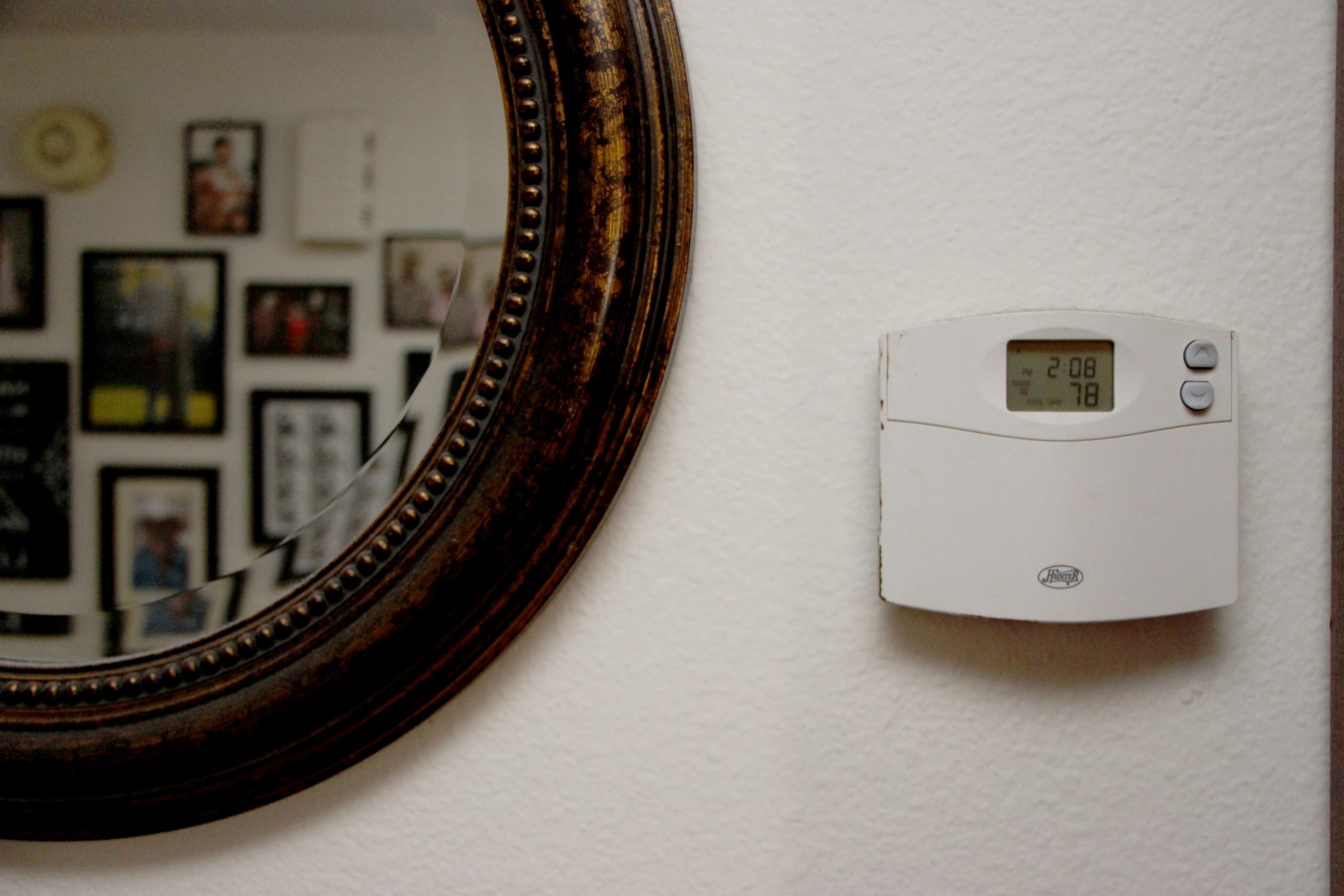
Lower your home’s thermostat at night. ATTRIBUTION: Photo by StarsApart (Flickr)
As fall and winter get into full swing, higher energy bills are never far behind. In a typical U.S. home, heating and cooling account for almost half of the total energy used, making it one of the largest home energy expenses. Fortunately, you can lower your heating costs and reduce your environmental footprint, too, with just a few simple adjustments.
Let the Sunshine In
Take advantage of the sun’s warmth by opening your curtains during the day: The heat will help warm up your house. In the evening, close them to trap the heat inside. Also, consider using insulated curtains, which can help you save up to 25 percent on your heating and cooling costs.
Layer Your Clothing
Instead of turning up the heat when you get a chill, put on a sweater. Layering your clothing is an effective way to keep warm without wasting energy. Also, keep a throw blanket on your couch for extra warmth while reading or watching TV.
Turn Down the Heat at Night
Before hopping into the bed, turn down your thermostat a few degrees. You probably won’t notice a difference when you’re under the covers, but the money you save will be noticeable: You’ll save an average of 1 percent on your heating bill for each degree that you lower your thermostat.
Service Your Furnace
At the end of summer or in early fall, make sure to hire a professional to service your furnace. A clean, well-maintained heating system will work more efficiently, saving you money and prolonging the life of your furnace.
Change the Furnace Filter
Before using your furnace for the first time of the season, change the filter. Furnace filters should be replaced every few months to keep everything operating properly and to prevent pollutants from contaminating your living space.
Seal Around Doors and Windows
Gaps around your windows and doors can let warm air escape and let cold drafts inside. Add weather stripping to seal off cracks and gaps. If you have older windows, keep drafts at bay with window insulation kits found online or at most hardware stores.
Adjust the Hot Water Temperature
Water heaters tend to be preset at 140 degrees, but lowering the temperature can help prevent scalding and save energy. In the winter, start by adjusting your water heater 5 to 10 degrees lower and test its performance.
Clean the Chimney
Make sure that your chimney is in good working order by having it inspected at least once a year. Cleaning your fireplace can improve the air quality in your home, keep your home warmer, prevent fires, and save energy.
Only Heat Rooms You Use
If you have an extra bedroom or storage room that you don’t really use much, consider closing it off for the winter. By closing the door and sealing off the vents, you’ll have less space to heat, and you’ll be able to lower your energy bill without affecting your comfort.
Use Ceiling Fans
Ceiling fans can be used strategically to keep you cool in the summer and warmer in the winter. Setting the blades to turn counter-clockwise will pull hot air upward in the summer time. When your fan is on low and turning clockwise, heat is pushed back down, making your space feel warmer.
